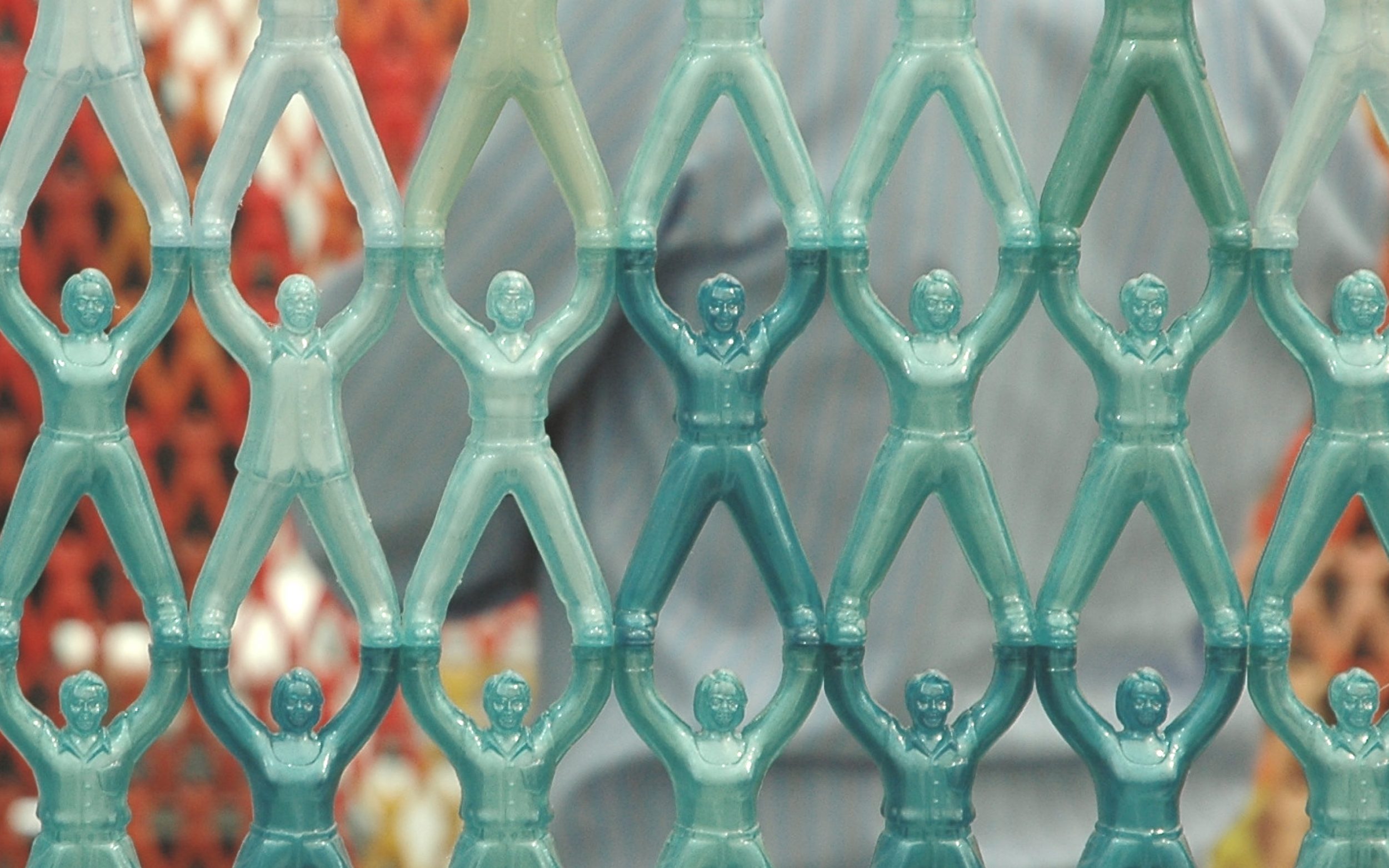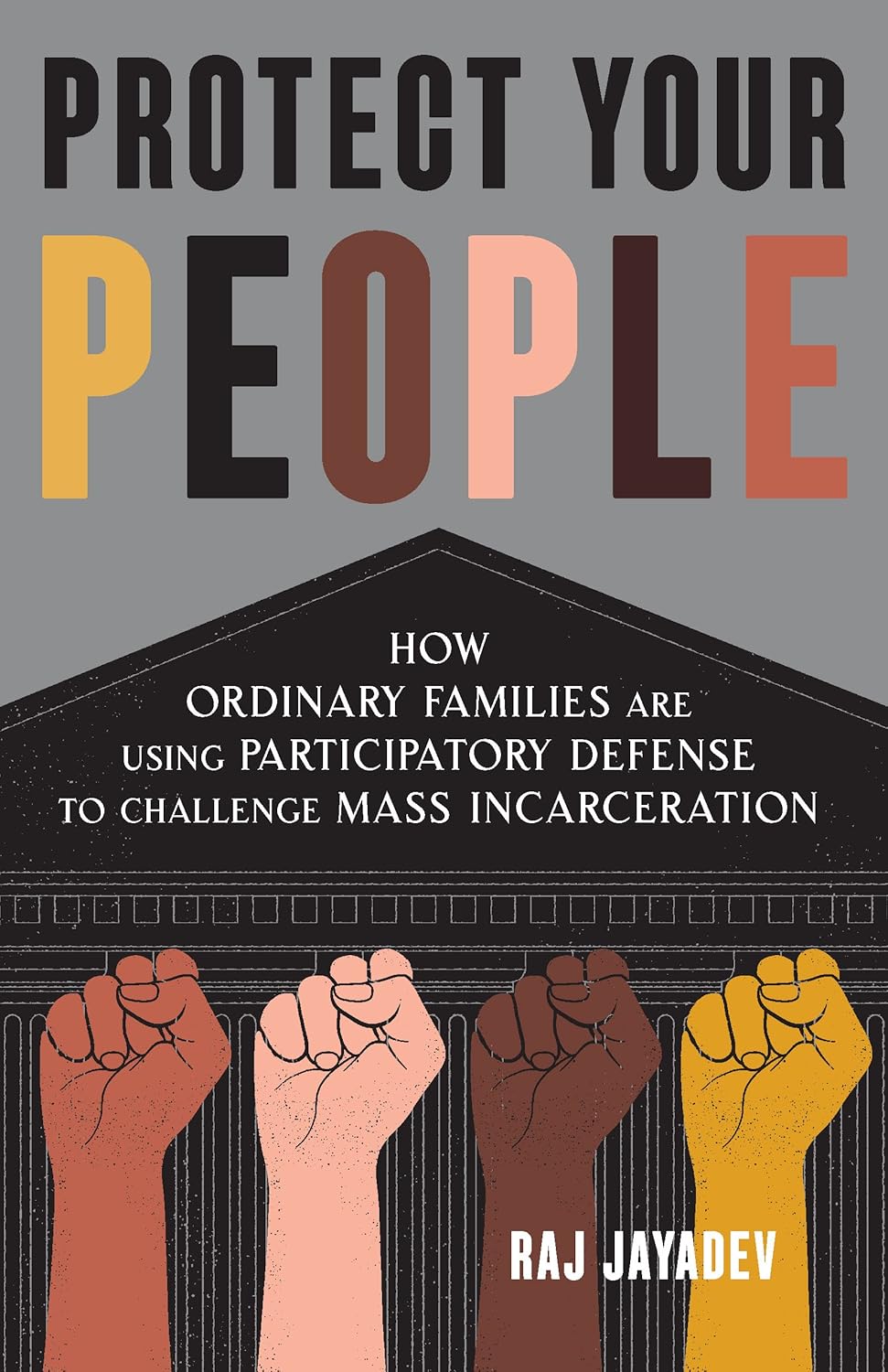The line waiting to get into the courthouse has to be one of the most stress-filled and anxious gatherings of people in any city, on any given day. In my home of San Jose, California, the afternoon line often runs a block long, snaking around the corner and bleeding into the sidewalk. The line is mainly made up of Black and brown folks of all ages—some who are there to attend to their own cases, others showing up to support a loved one who has a court hearing. There are moms holding little kids’ hands, people in various uniforms who took off work to attend court, elders trying to decipher folded-up court paperwork, folks running from the nearby light rail station, worried they will be late. Different native tongues can be heard, and people’s eyes are constantly scanning the area for friends, family, and attorneys—essential support.
As unique as each of the stories is, the common questions that weigh on everyone create an unspoken camaraderie. What will happen once they walk through the court doors? Will the person they are there for be able to walk out with them or will they be kept in jail? Will what happens at today’s court hearing forever change the rest of their life, their family’s lives?
While prisons, jails, and detention centers are the structures where people are held captive by mass incarceration, the courts are where the terms are first decided. And every day, people are processed through the courts to prisons and jails at blinding speed and striking scale. The courthouse is the origin story of every person held, and every person harmed, through mass incarceration in the United States. But the courts are also where the assembly line of incarceration can be disrupted and challenged. The irony of the growth of mass incarceration is that, in its wake of destruction, it is creating a movement—comprised of the incarcerated, their families, and their communities—that has the size, commitment, and strength to dismantle it and bring about its undoing.
Through a community-organizing model we call participatory defense, we are seeing a call taking root to fight mass incarceration at the court by families and communities, winning freedom, and building a liberatory and transformative movement with every new victory. Participatory defense is a strategic practice for families and communities to intervene in and ultimately positively impact the outcome of court cases, transforming the landscape of power in the courts. Family here goes beyond blood to include the friends, neighbors, partners, coaches, and others who care about the person about to walk through those courthouse doors. The model includes a range of approaches and tactics that, taken together, have gotten charges and sentences reduced or dropped altogether. In the process of these struggles, we have seen leaders emerge from the most difficult times in their lives and communities become stronger in the face of carceral forces that intended to shrink their power. We have seen communities across the country use participatory defense to protect their people, to reunite their families, and to free their loved ones.
Silicon Valley De-Bug is a community organization in San Jose. Since coming together in 2001, we have been a platform for local communities left out of the exclusionary Silicon Valley tech economy—immigrants and young people of color working minimum-wage temp jobs, the formerly incarcerated, families struggling to make rent in one of the costliest places to live in the country—to organize and to create campaigns, media, and other initiatives for racial and economic justice. The families I work with there have built up participatory defense and used this approach to impact the cases of their loved ones since 2006. But Silicon Valley De-Bug didn’t start with our efforts at the court. Instead, our organizing journey to participatory defense started where the violence of the system is first inflicted on the community—police contact.
Rudy Cardenas was killed in 2004 by a state law enforcement agent blocks away from where we operated in downtown San Jose. It was a case of mistaken identity: the police went to the home of the person who missed a meeting with his parole officer, but no one was home. As they were waiting outside, Rudy drove by. Going off of a vague description, they chased him in unmarked cars, and when Rudy got out of his car, one of the officers in pursuit, Officer Michael Walker, shot him in the back, killing him.
A number of us from De-Bug went to a vigil the family held, and upon first meeting them, became determined to support the family in their powerful journey to get justice for Rudy, whatever that meant to them. By galvanizing community support, the family secured the first open grand jury in the history of the county to indict the officer who killed Rudy. Though Walker was eventually acquitted at trial, it was clear that the organizing—the rallies, marches, calls for transparency and accountability from the family and the community—had transformed what was possible, not just for Rudy’s family, but for the larger community’s call to end police violence.
As more people started coming to De-Bug with their experiences of police violence, a trend emerged: they began to talk about other assaults by the system, including criminal charges, prosecutions, and incarcerations. Not only were they tased, but they were also charged with resisting arrest. Not only were they pulled over because they had been racially profiled, but it also resulted in a probation violation. The incident with the police was last week, and now they had court next week.
As organizers, we knew how to march, rally, and hold press conferences—how to flex community power against police violence. But the courts were a different thing. Without necessarily saying it out loud, we assumed we couldn’t make change in the courts, because that was the arena of lawyers and judges. But what that ultimately meant was that we would let people we knew, loved, and called a part of our community face the court system alone. Without realizing it, we were relinquishing our fundamental belief in collective power at the precise moment it was most needed to protect our people.
Over 90 percent of all cases nationally are “resolved” through a plea deal, meaning the majority of people charged with a crime never see the “day-in-court” fantasy featured so prominently in movies and TV shows. After taking a plea deal, they face a common story: a long jail commitment, a lengthy prison sentence, even deportations after time in prison or jail is done. Families are torn apart and communities are decimated—permanent harm that leaves a wake of damage across generations.
After bearing witness to this, we gave up on the limiting perspective that courts were only for lawyers. Prosecutors could be held accountable just like the police could; the systemic racism that informed criminal charges and sentencing could be challenged just as we challenged the use of a gun or baton by a cop. We did this by drawing from the only science we knew: fundamental community organizing. We are stronger together than alone. Why not apply the same ethic to the criminal punishment system?
Decarceral thinkers and doers
Every week, Inquest aims to bring you insights from people thinking through and working for a world without mass incarceration.
Sign up for our newsletter for the latest.
Newsletter
For us, this community started when people we knew who had cases started talking through their unique situations together. It was Blanca, whose teenage son Rudy was being accused of masterminding a robbery, despite the fact that he was severely developmentally delayed and was never outside of his family’s care. It was Cecilia, whose father was picked up when he was looking for work as a day laborer and now faced a consequential deportation order in addition to criminal charges. When Lamar was pulled over and suspected he had been racially profiled by the police, he asked why he had been stopped. He was subsequently beaten and pepper-sprayed by a sheriff and charged with resisting arrest. Blanca, Rudy, Cecilia, Lamar, and his mother Gail all came to De-Bug on a Sunday afternoon. The simple act of coming together was the beginning of a powerful movement.
At the De-Bug office, on a whiteboard, beneath the names of each person who had an active court case, we took an inventory of what we already knew and listed any possible actions we could take to impact the case. What are the charges? Is there a defense attorney involved? Has bail been set? Do we have the police report? When is the next court date? These questions helped identify what the action steps could be. For instance, if someone had a court date coming up that week, we would offer to show up, letting the judge and prosecutor know that the person facing charges was part of a supportive community that was invested in the person’s future and well-being. Or it might be a session to review the police report and identify the falsehoods and inconsistencies. A family’s action step might be collecting letters of future employment opportunities for a person to get to the defense attorney before they went to their next hearing.
Blanca, Rudy, Cecilia, Lamar, and Gail and other families came back the next week, and the week after that. Each time, they shared updates, and together we figured out a new set of action steps. Each of their cases ended in the way they had hoped and worked toward: charges dropped, no jail or detention time. We never made flyers for these meetings, nor did we do any outreach or promotion. But when people who came to the Sunday meetings visited their loved ones in jail, they’d invite other families doing jail visits to the meetings. In this way, word spread organically in the community and the jail that there was a space for families to support each other’s court cases.
Over time, these Sunday meetings were given a name, though it was born out of tragedy. On January 23, 2010, Albert Cobarrubias was shot and killed, becoming the first homicide of the year in San Jose. He was thirty-one years old and had been volunteering at the Sunday meetings for years. He was more disciplined than the rest of us. He was a father, had a military background, and would always show up early to set the chairs up and get the room ready and make fun of us for being late. He showed up for families in court and spread the word about the meetings to families from his part of town in East San Jose. He died on a Saturday evening. That Sunday, the families decided we would name the meetings at De-Bug after him, so he would always be with us as we fought for freedom. It would allow us to say his name when inviting people over. Sunday meetings officially became known as the Albert Cobarrubias Justice Project (ACJP).
We’ve all been told that if you’re not an officer of the court, there is no way for you to impact a court case. The system is designed to give your loved one “time served”—that’s the language the court uses to quantify the amount of time of incarceration. That phrase actually became part of our introduction at the beginning of meetings. We say that by participating in these weekly meetings, you can help turn “time served” into “time saved” for your loved one, meaning they are home, with you, living the life they should be living. We accounted for each victory in this way: the amount of jail or prison time someone was faced with versus what they got at the end of the process. This showed that participatory defense amounted to a tangible, identifiable outcome.
The direct impact on cases was undeniable. We saw charges get dismissed. We saw sentencing enhancements which would have committed a person to die in prison get removed. We saw people who had substance or mental health needs get treatment and care rather than fall deeper into a criminal punishment system that would have only harmed them further. Participatory defense was effective even after a conviction occurred, when a family made a compelling argument that their loved one deserved to be resentenced and returned to the community.
Over time, we developed a collective, cumulative intelligence. With every meeting, we learned about different charges, defense strategies, prosecutorial theories, individual judges’ biases, the best ways to talk to different types of attorneys, and so much more. A person would come to the meeting not knowing much at all about a loved one’s case besides the arrest date. Over time, they would learn what questions to ask, how to find court information and case related documents, and how to ask friends for character letters.
Public defenders were initially skeptical about the entire participatory defense approach. They didn’t understand why typically empty courtrooms were suddenly being filled by not only their client’s family members but other supportive families as well, or why their client’s parents were sending information to the defense investigator. They worried that family and community involvement would jeopardize their client’s case rather than assist it, and that family involvement would take away from their already limited time to work on the case. As time passed, both concerns evaporated, as the participatory defense approach addressed both issues.
Over time, public defenders ended up reaching out to us on cases where they could use support. They would refer their clients’ family members to our meetings or let us know of upcoming hearings where community presence could be especially important, so that when they and their clients looked back over their shoulders, they would see support in the courtroom pews. In fact, an off-the-cuff statement from Avi Singh, a public defender who works closely with De-Bug families, has become a rallying cry for us. A few of us had come to watch the trial of his client who was being wrongfully accused of attempting to hurt the police officer who shot him. We were visibly shocked that the man was even being charged. When we were leaving, Avi, seeming to recognize our shock, said, “These injustices happen every day in empty courtrooms.” For us, that was a call to action to partner with public defenders to fill these courts.
What we were doing at these meetings and in the community wasn’t an innovation nor was it unique to De-Bug. We were tapping into an instinct, an impulse to fight collectively that already exists in communities who have been targeted by the carceral system. There is a natural community-organizing IQ built from generations of struggle—latent people-power that, when tapped, could make tangible, real, proximate change. What was also undeniable was how people were transformed in their sense of power in the face of a system that was designed to strip them of agency. This was how participatory defense was an articulation of sustained movement-building. This community presence and voice was in direct opposition to the isolation of the court decision-making machinery.
The organizing energy didn’t end when a case was resolved. Through participatory defense, people saw their capacity to change a trajectory they were told they couldn’t, and they wanted to support other families. Participatory defense became an entry point for people who were battle tested through their own intimate fights to get involved in the movement for racial justice around them.
Copyright © 2024 by Raj Jayadev. This excerpt originally appeared in Protect Your People: How Ordinary Families Are Using Participatory Defense to Challenge Mass Incarceration, published by The New Press. Reprinted here with permission.
Image: Twm/Flickr/Inquest


